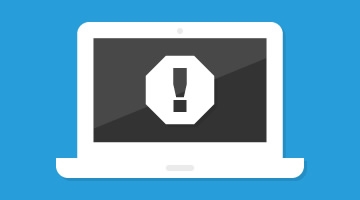Online contact is talking to other people online. This could be done by sending messages, both publicly and privately, commenting on other people’s content and by verbal contact using head sets or video calls.
Who might my child be communicating with online?
The internet is a great place to communicate with other people and some young people with SEND might find this form of communication easier or more preferable than in the offline world, as they can interact at their own pace without having to speak face to face.
There are so many ways to contact others online, such as social media, gaming or video apps and whilst recognising this is an enjoyable thing to do, some of these forms of communication can enable young people to start an online conversation with someone they don’t know in the offline world. All young people need help and support to understand what is meant by safe and appropriate online communication but a young person with additional needs might present as vulnerable and require further support in understanding these risks, especially if they are more trusting or honest by nature.
What do I need to know to help support my child?
Click on the answers below to read more.
There are lots of social media sites available to young people aged 13 or over which are a great way to connect with friends and share content, such as videos and photos. If your child is already engaging with social media the chances are that their online circle of friends may be broader than their offline circle of friends. Whilst this can offer them the opportunity to practice independence and communication, without their additional needs as a barrier, it can make it more difficult to monitor who and how they are communicating online. It is important that all young people set their account to private and make sure they only accept friend requests from people they actually know offline like family members and friends from school/ clubs.
You can find out more about social networking here www.childnet.com/parents-and-carers/hot-topics/social-networking.
It is important to talk about the difference between online and offline friendships and what these really mean. Friends who they know in the offline world are the most encouraged online friends to have but sometimes, online interests might allow them to communicate with people they have never met in real life. Essentially these people are strangers and sometimes, they may not be who they say they are.
Young people with SEND might be more trusting and believe the things someone tells or asks them to do online, especially if they have become close to their online friend. They might find it difficult to say no or recognise a potentially damaging or harmful situation. Sometimes, people lie or hide their online identity and intentionally contact someone vulnerable to try to take advantage of them. This could be pressure to send something, like a personal picture or they might ask to meet up in person. Online grooming can be difficult to spot but a change in behaviour, such as a change in their emotional pattern or becoming secretive with their online activity, could all be indicators that something is wrong. Our hot topic on online grooming gives more information and provides useful advice on how to prevent it.
Personal information includes any identifying detail about someone, such as: Full name, home address, school name and location, phone number, passwords, age/DOB, location of somewhere where they like to visit. These are all things that should be kept private and never shared widely with others online. Sharing personal information will give someone access to know who you are or where you live, which could put someone at great risk. Just as they do offline, learning what’s ok or not ok to share online to someone they’ve never met in real life, is an important and necessary life skill. Have a look at our beyond the classroom section from our STAR toolkit for more information about safe sharing online.
Live video chat and streaming allows people to communicate with others online and is a popular and easy means of online communication between young people. Many social media sites offer users the option to livestream and broadcast live videos to friends and followers and if the account is public and not set as private, the content is there for anyone to see. Smartphones are fitted with cemeras and microphones, making live communication possible and a popular way of keeping in touch. For specific advice for young people on livestreaming, check out our livestreaming hot topic.
Online gaming allows players to play against each other and chat publicly or privately, in the form of a private message. Whilst often the players tend to be friends or family members, multiplayer games allow players to join from all over the world. According to Ofcom, gaming is the number one online activity for young people aged 5-16. This could raise the chance of your child communicating with people they don’t know. There’s no reason for your child to not participate or enjoy multi-player gaming so long as they understand the essential safety messages before they begin. See our hot topic on gaming for for more information and advice.
Top tips to help your child communicate online.
- Discuss online contact. Finding out who your child is communicating with online and which apps, games or websites they are using to do so is an important place to start. Encourage your child to keep their online friendships to friends they already know offline. These could be friends from school, family members or a friend they have from a group they go to.
- Discuss online friendship. If your child has made an online friend, be it through a multi-player game or via social media, remind them that a friend made online (who they’ve never met in the offline world) is a stranger and might not be who they say they are. You might find it helpful to use a visual aid, such as a social story or draw a friendship circle together to differentiate between an offline and an online friend.
- Discuss what is meant by personal information. Personal information should be kept private and not shared online. If anyone online ever asks them for their personal information, tell them to politely say no and tell a trusted adult to make sure it’s safe. Explain that even friends they know offline might unintentionally re-share this information to other people.
- Discuss friend requests. If they are using social media, help them to think about who they choose to accept or invite as a friend. Once someone is accepted as a friend, they will be able to see all of their content. We recommend accepting requests from people you actually know in the offline world.
- Telling a trusted adult straight away. Encourage them to always tell an adult they know and trust if someone online upsets or is trying to pressure them to send something of themselves (like a personal image or video) A good friend, offline or online, would never ask you to do something they weren’t comfortable with.
- Don’t retaliate. If someone starts being unkind, tell your child to try and stay calm and not comment back. This could make the situation worse.
- Keep the evidence. If you are at all concerned that a child in your care has been contacted by an adult online, be sure to keep the messages as evidence and report it straight away. If you are suspicious about someone’s behaviour towards a child report to the Child Exploitation and Online Protection command CEOP who are part of the National Crime Agency.
- Decide your approach. If your child finds direct communication to be a challenge, consider introducing a code word or picture card that they can use to indicate that something is worrying them.



